Chapter 9: Experiential Learning in Biomechanics
9.2 Segmental motion analysis
Alix Bellemare and Rob Pryce
Introduction
The act of recording an activity to be able to review it, whether to assess technique, to compare to another activity or person, or to assess progress, is becoming more popular as the ability and access to cameras at our fingertips at practically any time has skyrocketed in recent years. This is much more convenient to do versus bringing an individual or team into a research lab, setting them up in a passive or active marker set, and recording the desired task in that lab, and then subsequently having to process and filter that data before being able to review it.
With the increased time of set up, and cost to set up, there is almost certainly more accuracy and reliability with these research lab set-ups, though. However, is the difference in quality enough to offset the cost? How do we, or can we, know this? What are things that need to be considered?
Firstly, the question of how accurate does the data need to be, needs to be asked. If the goal is simply qualitatively comparing two movements, or two individuals, then the simpler set up is probably all that is needed? But what if we need a bit more than that; or how do we make sure that even while using the simpler set up, we are getting the most accurate data as possible? There are many factors that can contribute to good quality video recording, and subsequent processing/analyzing.
Factors Contributing to Good Quality Video Recording
There are things that must be done to be able to produce accurate data, while there are other things that, while helpful, will not disallow data to be gathered completely.
Necessary Factors
Calibration Factor
When taking a video recording of a movement, and subsequent measurements are needed to be taken from the recording, how is one to know how long distances are, such as stride length, leg length, distance covered in a jump or stride? There must be some sort of calibration factor included in the video. This can be a physical object in the frame, such as a meter stick or scaling image, as seen below. This can also be simply knowing the length of something in the frame, such as the length of the bat being swung, the diameter of the ball being kicked, or the length of the brachium of the subject being recorded. An advantage to using something inherently in the frame is that it is certainly in the right frame of reference. Because it is part of the recorded movement, we know that it is not behind or in front of the movement. However, this measurement can be less reliable or accurate compared to a meter stick or scaling image, as we cannot be sure that it is 100% perpendicular to the video recording device, whereas we can with an external calibration factor.
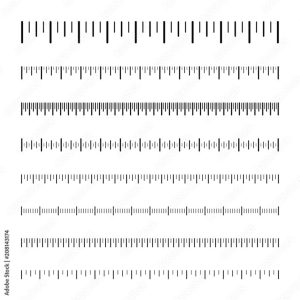
Figure 1: Measurement Scale with black marks. Retrieved from Adobe Stock
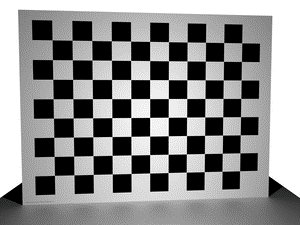
Figure 2: Calibration Checkerboard. Retrieved from Calib.io
Perpendicular arrangement of recording
For the most accurate or best results, there must be no angulation of the viewpoint (camera, phone, etc.) to the recorded motion. If the video is not taken from exactly perpendicular to the motion occurring, what can happen? How does this affect the analysis of the video? Does it matter as much for measuring an object or its trajectory compared to a human and their movement? How about the type of camera used? Does this affect your capture?
Helpful Factors
Lighting
A well-lit area can greatly impact the quality of the video recorded. The easier it is to discern the object or person moving through the space that is being recorded, the easier it will be to measure angles and/or distances needed from said video. If there are shadows on or around the object or person being recorded, this can make it hard to discern the edges/ends of the person or object, and this can lead to inaccuracies.
If retroreflective markers are being used, then bright enough light reflecting on the markers is needed for them to show up bright in the video being recorded (however, the opposite may be true if using them for 3D motion capture).
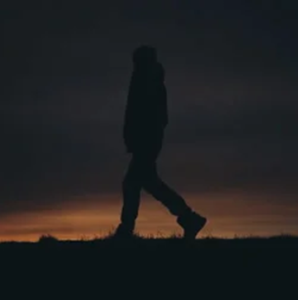
Figure: Poor lighting for capturing movement. Retrieved from Pond5
Resolution
As good lighting can help outline objects and subjects in videos, so can higher resolution video recordings. The lower the resolution of the video (pixel count), the more ‘grainy’ or blurry the video can appear, especially if there is an appreciable distance between the subject and the camera/video recording equipment.
Contrast
If the lighting is not ideal, or the resolution is low, sharper edges/ends of the person or object may be easier to discern in video if there is high contrast between the recorded object/person and the surroundings. For example, if a person is wearing black in a dark room, or against a dark wall, it will be more difficult to identify their limbs, shoes, etc. in the video, compared to if they were wearing dark colors against a light background or in a bright room.
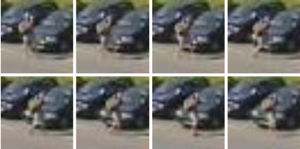
Figure: lack of contrast and poor resolution capture. Retrieved from ResearchGate
High Frame Rate
While not absolutely necessary, depending on the skill, movement, or activity being recorded, a higher frame rate has the ability to greatly increase the quality of the data collected from video recording. If the movement in question is quick in nature, such as a pitch or kick, it may be hard to identify all key features of that movement at a low frame rate (point of impact, point of release, etc.). With an increase in frame rate, the possibility of capturing the exact moment(s) in time of interest correspondingly increases.

Example of Good Quality Motion Capture
Ideal conditions for good motion capture would include all of the above. Most importantly, good/proper lighting, good/high contrast, appropriate capture rate (no blur), as well as a calibration factor (if required).
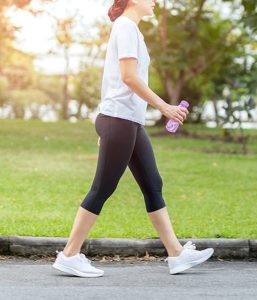
Figure: proper settings for motion capture. Retrieved from Reader’s Digest
Errors in Data Collection and Analysis
There are many different errors that may occur while collecting data (and subsequently analyzing it). Some of these errors are inherent with the process being used, while some are actually avoidable or reducible.
Systematic errors
Test your understanding
You can use information and inference from the papers suggested in each question, and listed in the resources at the end of this lab. You can also incorporate other information known to you, but you must reference where it is coming from (even if it’s lecture notes/textbook).
- What is the importance of a calibration factor? Does it matter how big/long it is? Should it be vertical? Horizontal? Does it matter? Explain your answer.
- According to the Martin, Frisch, and Zwart (2020) paper, why should particular care be taken when setting up a shot with cell phone cameras?
- Does recording in landscape versus portrait view on a cell phone camera make a difference? Explain your answer.
- Consider the following scenarios:
- If you had to record a walking trial, how would you set up your camera and your participant?
- If you had to record a more discrete task, such as a box vertical jump, how would you set up your camera and your participant?
- Were your set ups for a. and b. different? Explain why or why not.

